Tharros History
The city of Tharros was central to Mediterranean trade routes across many centuries (from approximately the seventh century B.C.E. to the sixth century C.E.) and now this rich archaeological site yields new information about the place and its culture.
Gallery
Image Carousel with 5 slides
A carousel is a rotating set of images. Use the previous and next buttons to change the displayed slide
-
Slide 1: A lead ingot from a shipwreck near Tharros has a Latin inscription: “Company of Marcus and Caius of the Pontilienes sons of Marcus” (Soc[ietas] M[arci et] C[ai] Pontilienorum M[arci] F[iliorum]).
-
Slide 2: Hundreds of ingots from the wreck of a Roman-era vessel are now in a museum in nearby Cabras, along with photos of underwater archaeologists at work.
-
Slide 3: Researchers with the University of Cincinnati conduct bioarchaeological studies on material from Tharros.
-
Slide 4: An aerial view of Tharros and the Mediterranean Sea on the western coast of Sardinia.
-
Slide 5: Remains of parallel stone house walls in the Punic-Roman quarter.
![A lead ingot from a shipwreck near Tharros has a Latin inscription: “Company of Marcus and Caius of the Pontilienes sons of Marcus” (Soc[ietas] M[arci et] C[ai] Pontilienorum M[arci] F[iliorum]). A lead ingot from a shipwreck near Tharros has a Latin inscription: “Company of Marcus and Caius of the Pontilienes sons of Marcus” (Soc[ietas] M[arci et] C[ai] Pontilienorum M[arci] F[iliorum]).](/sites/default/files/styles/cu_crop/public/content/Tharros/Slide-Tharros-Marcus-ingot.jpg?itok=a2kKWJW5)
A lead ingot from a shipwreck near Tharros has a Latin inscription: “Company of Marcus and Caius of the Pontilienes sons of Marcus” (Soc[ietas] M[arci et] C[ai] Pontilienorum M[arci] F[iliorum]).
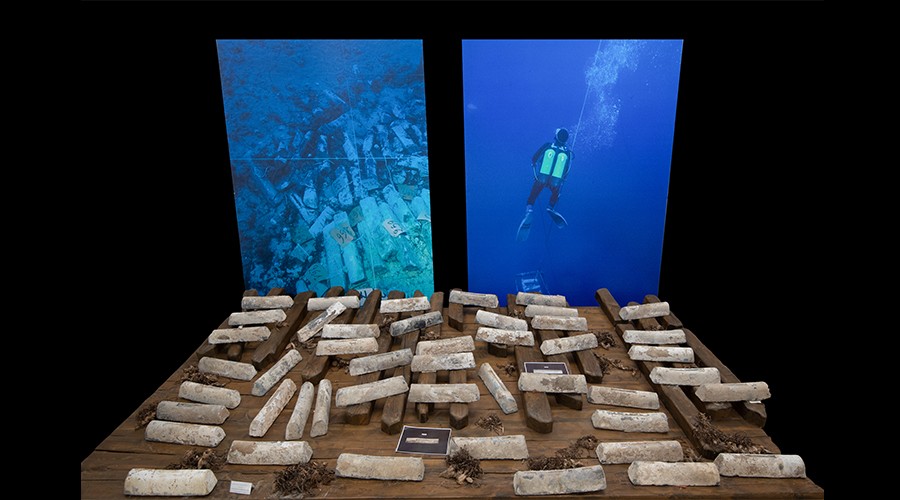
Hundreds of ingots from the wreck of a Roman-era vessel are now in a museum in nearby Cabras, along with photos of underwater archaeologists at work.
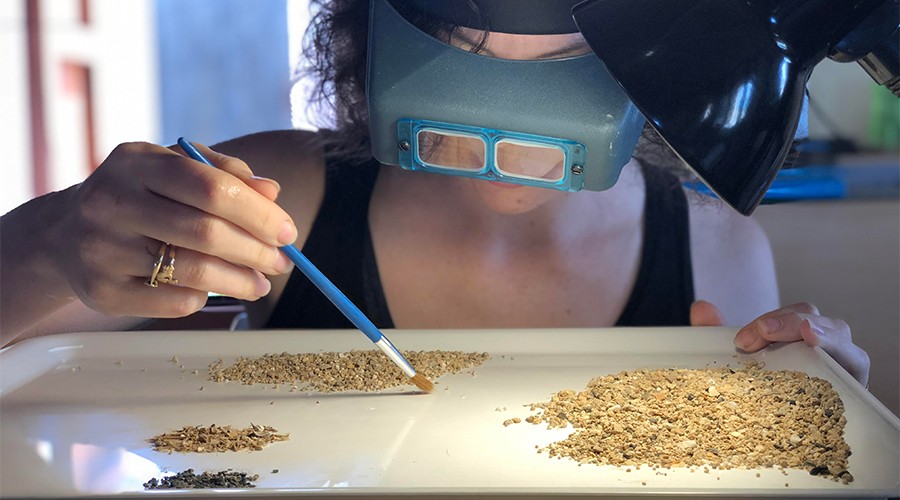
Researchers with the University of Cincinnati conduct bioarchaeological studies on material from Tharros.
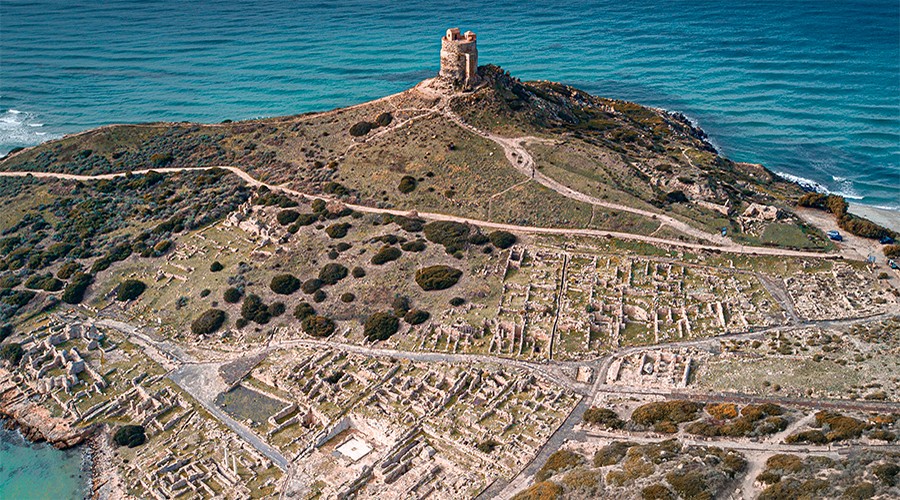
An aerial view of Tharros and the Mediterranean Sea on the western coast of Sardinia.
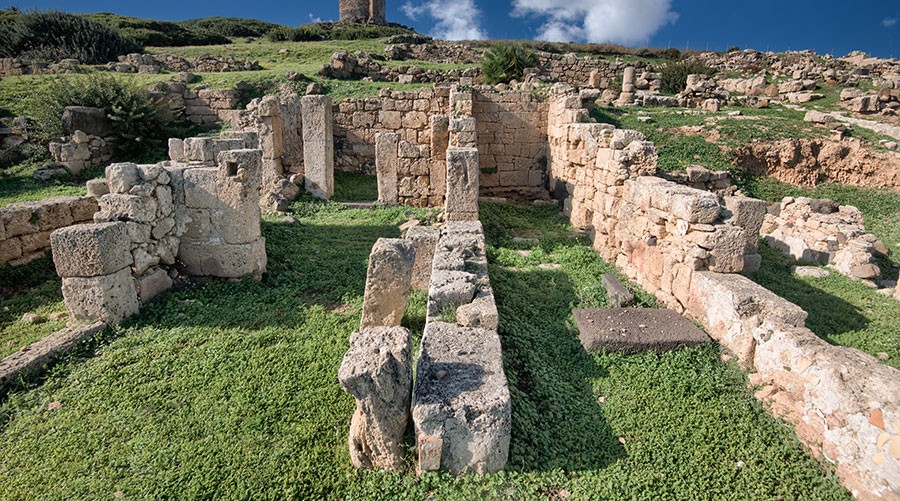
Remains of parallel stone house walls in the Punic-Roman quarter.
Background on Tharros
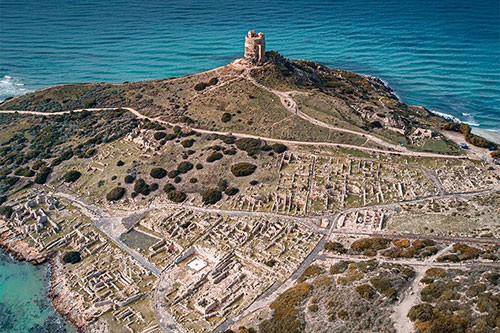
Tharros spreads across three hills on Sardinia's Sinis Peninsula, an area dense with archaeological sites reaching back to the Middle Bronze Age and the Byzantine Age. Nearby is Mont’e Prama, the home of colossal limestone statues discovered in 1974.
The city’s strategic location in the Western Mediterranean permitted economic prosperity and a wealth of culture. The port was a busy hub amid North Africa, the Balearic Islands, and the Eastern Mediterranean, as evidenced by nearby shipwrecks, one of which has yielded hundreds of lead ingots from Spanish mines.
The area was populated very early, to judge by remains that date back to the Middle Bronze Age. The earliest ruins at Tharros are from the seventh century B.C.E., probably in the time of Punic settlers from North Africa. These are two necropolises and a tophet, a sanctuary that holds urns containing the incinerated remains of infants and sacrificial animals.
The Carthaginians monumentalized the urban layout, constructing several temples and more tombs in the two necropolises. These burial sites held most of the treasured artifacts (ceramics, pottery, jewelry, amulets, and scarabs) found during official excavations and illegal incursions.
The Romans maintained the most functional Punic urban elements after their arrival in the third century B.C.E., while erecting their own infrastructure (such as public baths and aqueducts). The Roman public structures were altered in early Christian and early medieval times; for instance, a hexagonal baptistery and a church building were added to existing edifices.
Tharros was eventually abandoned around the year 1000 C.E., perhaps because of pirate attacks and other raids, or a dwindling population. The site was plundered by unscrupulous looters over the centuries; treasures from the tombs were widely trafficked, particularly in the 1800s.
The excavations now underway reveal structures and items that help scholars fill gaps in the archaeological and historical record. In this digital exhibition are images of the site as well as pictures of the treasures now in museums in Sardinia and abroad.
Photo credits: Ingots: Archive of the Mont'e Prama Foundation; photo: Nicola Castangia. Giovanni Marongiu Civic Museum of Cabras. • Lab: Steven Ellis, University of Cincinnati. • Aerial: Archive of the Mont'e Prama Foundation; photo: Valentino Selis. • Dwelling: Archive of the Mont'e Prama Foundation; photo: Nicola Castangia